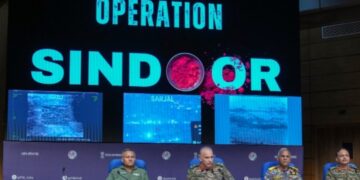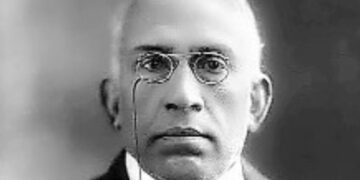In Navaratri, devotees brace themselves to bid adieu to Maa Durga, the shakti herself, asking her to come back the next year once again.
Throughout the nine days of Navratri, the Devi is celebrated in her nine forms. Very intricately, a woman also goes through nine stages in her life. These traditions symbolising the strength and resilience of women, representing women empowerment, have been revered and cherished in Bhartiya culture for centuries.
However, in modern times, Western culture has significantly impacted and influenced Bhartiya culture, including our customs and beliefs. Often, we tend to view traditional values passed down by our parents and grandparents as outdated, while ideas originating from the West and propagated through social media and the internet are often perceived as more credible and readily accepted.
Welcome to this special edition.. where we explore the fascinating intersection of ‘Nine Days, Nine Forms of Durga, and ‘Feminism’…..
When we look at the importance of feminist movements, we cannot ignore how they underwent a transformation under the influence of left-leaning ideologies. What’s even more concerning is that this transformation led to a departure from societal norms, descending into a realm of extreme degeneration, counter to logical reasoning. This phenomenon is often referred to as “wokism,” where feminist movements have taken a disheartening turn into a state of affairs that many find deeply troubling.
We faced something similar when we tried to include ourselves to the discourse around wokeism. Suddenly being woke became mainstream. To be woke became a fad. To be woke became associated with becoming a feminist. While losing ourselves in translation, we somewhere down the line got it twisted…like we learned to tell ourselves that if you are not ‘woke’, you can’t be a feminist. These are the self made shackles we have tied ourselves with.
And that is where we have misunderstood “feminism”. At Least the feminism is duly a part of our heritage. Our culture has actually had feminism woven into its tapestry since forever.
But for many, feminism is a very western concept. In the present day and culture, associating bad behaviour with a particular gender, has become synonymous to feminism. While in the process of empowering women, giving voice to that one section of the society, while armouring them, we are missing the bigger picture, we are still failing to see that anti-male, or anti-men can’t be the essence of our fight. In the garb of empowerment, we have been pigeonholing people and sidelining the various issues which feed on societal harmony like the parasites under furniture.
Modern Day feminism as we understand, it is about equal rights, equal opportunities, which is not wrong in any form or matter. However, extremes on any side are harmful. Discussions around gender are becoming more tit for tat, rather than being more cohesive, or conclusive. Today feminism is a cribbed way of reaction to the atrocities the west has thrust upon the women in their society, pigeonholed them into being perceived as objects. The west since very early on, perceived women as {Victorian age women, women in Jane Austen novels where they had no prospects apart from marriage, mention how Albert Einstein’s wife did not get recognition for her contribution in Albert Einstein’s work} . In their half knowledge of the truth some artists of our times depict Hindu Gods in atrocious forms.
Maa Durga or the Shakti herself is present in all of us. The term Shakti refers to multiple ideas. It is the dynamic energy that is responsible for creation, maintenance , and destruction of the universe. This energy or shakti is responsible for creation, as mothers are responsible for birth. Without shakti, nothing in this universe would happen; this energy is what gives direction to Shiva, which is passive energy in the form of consciousness, to create. Maa Durga is the embodiment of this Shakti only. The women in the Bharatiya culture are considered symbols of the Shakti. It is also true that women in our society have been mistreated, considered weaker. But today, we are also the country with ‘33% reservation of Women’ in the Parliament.
“Feminism” as we usually understand is a set of aspirations of women to be given equal opportunities and equal rights. Some modern thinkers like Professor Shashi Prabha Kumar shed light on Vedic feminism. While the current form of Western feminism only talks of women as bodies at the physical level, Vedic feminism talks about women at the spiritual level as well as the social, empirical and familial levels.
When one leans on to the truth, they realise that the Bharatiya feminist movement is much more real, much more transcending, much more evolved than the western feminist movement ever was, it is embedded in spiritualism rather than the material world. The latter had been highly aggressive, and shifted through many forms, depending upon the needs of the time.
The Bharat Varsh, is the land of Vedic feminism. According to some researchers, Vedic view of feminism venerates women not only from the spiritual point of view but also from the familial aspect. On the contrary, the Western model of feminism objectifies women in the consumerist model of living, as we are in today. Western feminism objectifies women to such an extent that it becomes impossible to talk about the dignified persona of women portrayed in the Vedic literature. The Vedic view is inclusive and holistic while the modern view is exclusive and fragmented. It is inherently motivated by complementarities and coordination between both genders.
The current notion of feminism is aggressive and it puts women on an antagonistic platform with men. Through the Vedas we learn that women had distinguished and dignified ways of living life. Women were seers who interpreted mantras, and have been referred to as Rishikas. Some of them are mentioned as Suryaa, Apala, Atreyi, Vishvavara, Shachi, and Indrani. In addition to that, there are several female deities in the Vedas such as Saraswati, Usha, Aditi, Kuhu, etc.
Feminism in the west has been a consequence of competition and confrontation, an aggressive take on finding space, finding meaning, finding identity. However, a more productive way would be a more amicable approach. Our scriptures, our vedas have taught us that women have to be treated with respect.
Pictures, evidences show that women were given the prime status in families. They were part of communities, part of discourse on building communities. Western feminism is about empowering women, considering them weak. But in vedic literature women are mentioned as creators. She is depicted as a force, as a creator. An ever growing being as she gives birth. However, it is not limited to that. She is part of intellectual discussions.
She is also described as a divine soul, and someone who is ever anew. In our scriptures, Women have never been considered weak, or timid. Rather, women have been addressed as Aditi which etymologically means independent or the one not dependent on anyone. Invoking the deity Aditi, we invoke the form of woman, which is independent. It has also been highlighted how women are spiritually better accomplished, than men.
In Vedic literature a complete complementary pattern is projected and propagated. Additionally, in the Vedic ceremonies, women had the right to choose their husbands, in the form of Swayamvara.
In the present times, faith, religion, and spiritualism have evolved to occupy separate spheres. This division extends to various movements, each confined to its respective box. In western feminist movements women had to fight for their space, for existence, for being treated as an equal human being, bound in corsets and orthodox values.
The Vedic view is duty-oriented while the modern view of feminism is rights-oriented. In our roots, Vedas define the roles and duties of different persons and groups in the society. However, there is no mention of rights. Analysts of vedas explain that if duties are performed in the right way the rights of others will be protected.
The current form of feminism only focuses on empowering only women. As a community if we empower only one section of the society the other sections get disempowered, sidelined, depriving them. We don’t need a model, rather just equal rights for all people irrespective of their gender.
Ironically, at present we worship deities, the female divinity but in our daily lives, we find instances which are shameful not only for women but also for men. The mindset that prevails in our society is of fear, of insecurity at both the fronts. Yes, the country is developing in all facets, but it is also true that incessant darkness still preludes the lonely roads.
Some great women dedicated their whole life to women rights, fighting for the rights of an entire generation that came behind them. But they had some simple things to convey through their movements. Former Associate Justice of the Supreme Court of the United States Ruth Bader Ginsburg has said that “When I talk about feminism, I don’t talk about the empowerment of women.” It is not only women’s liberation but it is the liberation of both men and women. True feminists never talk about empowering women at the cost of other genders, or tout for making women stronger. They understand that women are inherently strong. It is just the world around them which needs to change its perception about strength.
















Comments